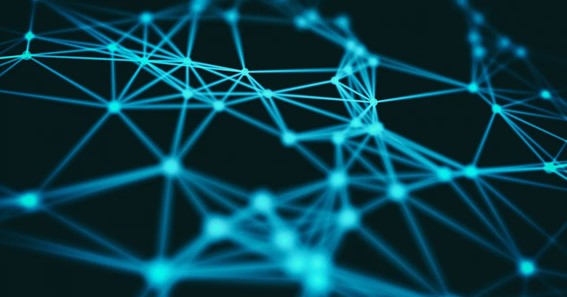It is found that many organizations use distributed networks that can run efficiently all the time! But this doesn’t mean they do not have any challenges or issues. In my article, I will discuss what distributed networks are and why they are a good match for a lot of companies. This technology has been used on a wide level for the business. Here, I have proven their benefits which is the reason why so many companies still use this architecture. Let us now study all the facts of distributed network encryption in detail.
What Is A Distributed Network?
A type of computer network which spread over different networks is known as a distributed network. This network provides a single data communication network that can be managed jointly or separately by each network. Generally, the distributed networks and processing work together to deliver specialized applications to different remote users. This means that the application can be hosted and executed from a single machine but accessed by others.
A Server Computing Architecture is an example of a distributed network. Here the server is the producer of a resource and many interconnected remote users are the customers.
How Does Distributed Network Works?
Modern distributed networks have developed to include independent processes that might run on the same physical machine. With the help of network mapping software will help you process creating network maps to visualize network devices and virtual domains. The hardware and software architectures are used to maintain a distributed network. You need to make sure everything is interconnected. In short, CPUs via the network and processes via the communication system.
Distributed Network Architecture
Distributed network architecture is a network that connects all the components together so they can transfer messages to communicate with each other. It takes care of three main aspects of a system with large networks. A single central control system can be maintained with distributed network architecture. But here the load can be distributed among the several local sites. These sites can also be physically separated from each other but connected via the internet. So, if one system ever fails the other can continue to work without being affected. The load is thus shared among the different systems which make networking quicker.
Click here – Patek Philippe Nautilus Ref 5711/1A: What Makes It an Iconic Watch?
Distributed Network Diagram
Below I have given the diagram for a distributed network.
Distributed Network Types
Generally, a distributed network falls into any one of the four different basic architecture models. Below I have mentioned down the types of distributed networks for you.
- Client-server: In this, clients contact the server for the data, then format it and display it to the end-user.
- Three-tier: This type of architecture model is most commonly used in web applications.
- N-tier: They are generally used when a server needs to forward requests to additional enterprise services on the network.
- Peer-to-peer: When the responsibilities are uniformly distributed among the machines in the system is known as peers. This can serve as either client or server.
Distributed Network Vs Centralized
The centralized vs distributed network debate is relevant to both individuals and organizations. Centralized systems may have helped in building the Internet, but they have important disadvantages. Continue to learn more about each of these terms.
Distributed Network
In a distributed network, users have equal access to data. It enables users to share ownership of the data. Hardware and software resources are allocated between the users. Thus, a distributed network protocol is safe from the independent failure of components. With the increase in security, data storage, privacy concerns distributed systems are the natural choice for many organizations.
Pros
- Distributed networks are fault-tolerant.
- They are transparent and secure.
- It promotes resource sharing.
- They are extremely scalable.
Cons
- This network is more difficult to deploy.
- They have higher maintenance costs.
Centralized Network
A centralized network is easy to set up and can be developed very quickly. All the users are connected to a central network owner or server in a centralized system. Here, the central owner stores data which can be accessed by other users. The system will no longer work properly and users cannot access the data if the server crashes. Below I have mentioned some pros and cons of a centralized system. This will help you to understand why centralized networks are no longer the first choice for many distributed network organizations.
Pros
- They can be developed very quickly.
- Centralized networks are easy to maintain.
- It is practical when data needs to be controlled centrally.
Cons
- This network is prone to failures.
- You need higher security for users.
- It takes longer access time to data for users who are far from the server.
Below I have also mentioned certain factors of both terms.
[table id=2 /]
Distributed Network Vs Decentralized
Most people often take a decentralized network as a synonym of a distributed network. But both the terms are different from each other. Here, I will compare a distributed network with a decentralized network for you.
Distributed Network
In a distributed network, users have equal access to data. It enables users to share ownership of the data. Hardware and software resources are allocated between the users. Thus, a distributed network system is safe from the independent failure of components. With the increase in security, data storage, privacy concerns distributed systems are the natural choice for many organizations.
Pros
- Distributed networks are fault-tolerant.
- They are transparent and secure.
- It promotes resource sharing.
- They are extremely scalable.
Cons
- This network is more difficult to deploy.
- They have higher maintenance costs.
Decentralized Network
As per its name, decentralized systems don’t have one central owner. They use multiple central owners, each of which stores a copy of the resource’s users can access. It is prone to crashes just as the centralized one. This is because when one or more central owners or servers fail the others can continue to provide data access to users. Let us now see its pros and cons.
Pros
- They are less likely to fail.
- A decentralized network performs better.
- It allows for a more diverse and flexible system.
Cons
- This network has security and privacy risks to users.
- They have higher maintenance costs.
- It performs poorly when not properly optimized.
Below I have also mentioned certain factors of both terms.
[table id=3 /]
Benefits Of A Distributed Network
By now you must have understood all about a distributed network model. Below I have shared some benefits of a distributed network you must know.
-
Scalability
A distributed network makes scalability a lot simpler than a single network. As the load is distributed, new devices can be added and configured to the network without much disruption.
Too many devices can slow the system down and overwhelm the server in case of a single network. This thing won’t happen with a distributed network.
-
More Efficient
All the requests are handled by the central server in a centralized network. On the other hand, a distributed network passes on the requests to the administrators. While the central systems do other things such as running analysis or even upgrading the underlying platform. It can be done simultaneously with the requests since the upgrade can later be applied to each administrator when they are free. Your system doesn’t stop working by doing this.
-
Reliability
A centralized network processes everything with its main server. The system will be unavailable or crash if the central node fails or some of its files get corrupted. Technical failures and system corruption are contained in their respective administrators with a distributed network. This means that the rest of the system can work as usual. Thus, all the small centralized networks that make up the larger distributed network work as backups for the rest of their peers. This increases the system’s overall reliability.
There are several other tasks that a distributed network can tackle with increased efficiency. From backing up and recovering data, managing inventory to controlling access there are several things this network can do.
Distributed Network Challenges
Sometimes you may face some challenges in distributed networks. Complicated architectural design, construction, and debugging processes are required to create an effective distribution system. Below I have mentioned some challenges you may encounter.
-
Scheduling
Generally, a distributed network has to decide which jobs need to run, when they should run, and where they should run. Schedulers ultimately have some limitations. This leads to under-utilized hardware and unpredictable runtimes.
-
Latency
The more your system is widely distributed, the more latency you can experience while communicating. High latency leads to teams making tradeoffs between availability, consistency, and latency.
-
Observability
The gathering, processing, presenting, and monitoring hardware usage metrics can be challenging for large clusters.
Distributed Network Examples
You may find several examples of a distributed network around. Here, I have picked out some of the best examples of distributed networks for you.
-
Networks
The very first example of a distributed network is LAN (Local Area Networks). Computers are able to send messages to other systems with a local IP address. Then the Internet still continues to be the biggest growing example of distributed networks. The distributed systems have evolved from “LAN” to “Internet” based as the internet has changed from IPv4 to IPv6.
-
Telecommunications Networks
Telephone and cellular networks are also the best examples of distributed networks. You know that telephone networks have been around for over a century. It is considered as an early example of the distributed network model. The Cellular networks are distributed networks with base stations that are physically distributed in areas called cells.
-
Distributed Real-Time Systems
Below I have listed down some of the industries that use distributed networks.
- Airlines use flight control systems.
- Uber and Lyft use dispatch systems.
- Manufacturing plants use automation control systems.
- Logistics and e-commerce companies use real-time tracking systems.
Many industries use the above real-time systems that are distributed globally.
-
Parallel Processing
Previously, there used to be a difference between parallel computing and distributed systems. Parallel computing used to focus on how to run software on multiple processors that accessed the same data and memory. Distributed networks are meant for separating machines from their own processors and memory. With the rise of modern operating systems, distributed computing is also surrounded by parallel processing.
-
Distributed Database Systems
A distributed database is a database that is located over multiple servers or physical locations. In this case, the data can either be replicated or duplicated across systems. Many popular applications use a distributed database system. They need to be aware of the homogeneous or heterogeneous nature of the distributed database system. A Homogenous distributed database is easier to manage by adding new nodes and locations. While heterogeneous distributed databases allow for multiple data models.
Read Also: Most useless degrees
FAQ
What Is An Example Of A Distributed System?
Telecommunications is the best example of the distributed system. Telecommunication networks are distributed networks with base stations distributed in areas called cells.
Is The Internet A Distributed Network?
Yes, the Internet is a distributed network. This distributed network has been around for over a century.
What Are The Advantages Of Distributed Network?
The advantages of a distributed network are as follows.
- Distributed networks are fault-tolerant.
- They are transparent and secure.
- It promotes resource sharing.
- They are extremely scalable.
What Is The Difference Between Centralized And Distributed Networks?
The difference between centralized and distributed networks is as follows.
- Distributed networks are fault-tolerant while centralized networks are prone to failures.
- Distributed networks are transparent and secure while centralized network require higher security for users
- Distributed networks are extremely scalable, while centralized networks have very low scalability.
What Is Distributed Network With Example?
Telephone and cellular networks are also examples of distributed networks. Telephone networks have been around for over a century and it started as an early example of a peer to peer network. Cellular networks are distributed networks with base stations physically distributed in areas called cells.
What Is A Distributed Network In Crypto?
A distributed network is designed so that there is no central server or entity that others must connect to. Instead, network participants connect directly to each other. Bitcoin and Ethereum are examples of distributed networks.
What Is A Distributed Network In Blockchain?
In a decentralized blockchain network, no one has to know or trust anyone else. Each member in the network has a copy of the exact same data in the form of a distributed ledger. If a member’s ledger is altered or corrupted in any way, it will be rejected by the majority of the members in the network.
What Are Some Examples Of Distributed Systems Used Today?
Distributed systems are also used for transport in technologies like GPS, route finding systems, and traffic management systems. Cellular networks are also examples of distributed network systems due to their base station.
Read Also: How To Remove A Pop Socket?
Conclusion
Distributed networks offer several benefits for companies who are looking for scalable architectures that can run efficiently all the time. The scalability of a distributed network system can get tricky sometimes. The main advantage of a distributed network is that they are transparent and secure. Its reliability, as well as the efficiency, helps in controlling the administrators through the central server. Hence, a distributor network is a great alternative for businesses that can handle the complexity very well.
To Know Some Great Stuff Do Visit GetDailyTech
To Know Some Great Stuff Do Visit GrowMeUp
To Know Some Great Stuff Do Visit GuessingTrick
What is meant by distributed network
What is a distributed network means






